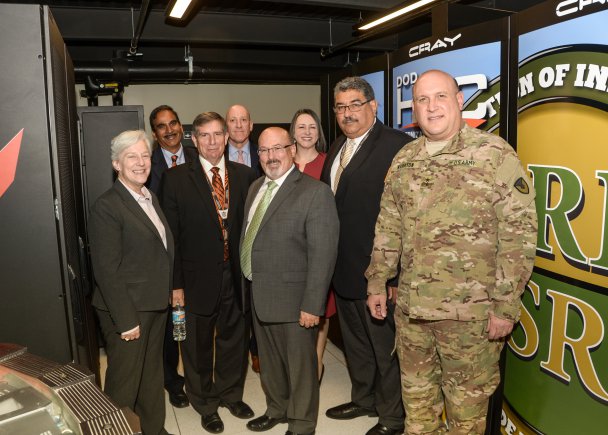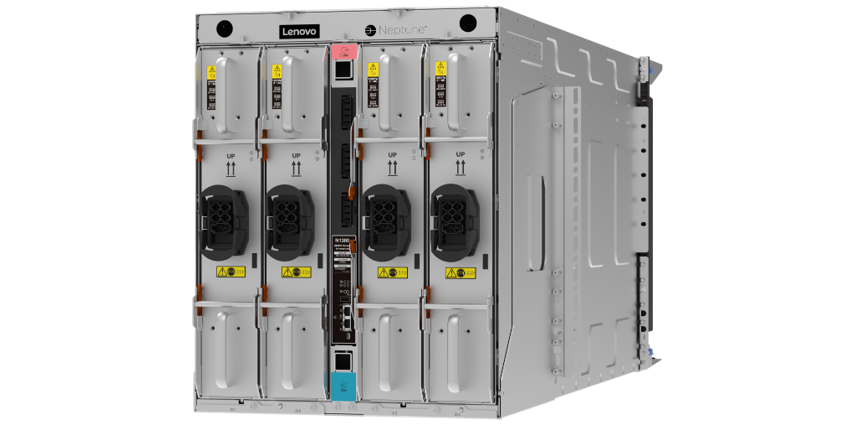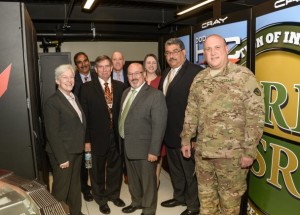
Army and Department of Defense officials gather at the U.S. Army Research Laboratory Department of Defense Supercomputing Resource Center for the Excalibur supercomputer ribbon-cutting ceremony at Aberdeen Proving Ground, Md., Oct. 16, 2015.
On Oct. 16, the U.S. Army introduced Excalibur, its newest supercomputer. Currently ranked at #26 on the TOP500, the Cray XC40 system will help ensure Soldiers have the technological advantage on the battlefield, officials said.
About 50 officials gathered for a ribbon-cutting ceremony at the U.S. Army Research Laboratory, or ARL, Department of Defense Supercomputing Resource Center.
Increased computational capabilities will allow researchers to bring improved communications, data and intelligence to Soldiers in the field, said Maj. Gen. John F. Wharton, commanding general of the U.S. Army Research, Development and Engineering Command.
“The Army Operating Concept discusses innovation and accelerating the speed of technology. The Excalibur will allow us to do that,” he said. “You will set the standard for our nation and armed forces as we work into the future.
“The capability you give is decisive overmatch for our Army. It gives our Soldiers an advantage when we can tie the tactical network to instantly get data back to the field.”
While the Excalibur and other supercomputers are housed at an Army installation, all military services conduct research at the supercomputing facilities.
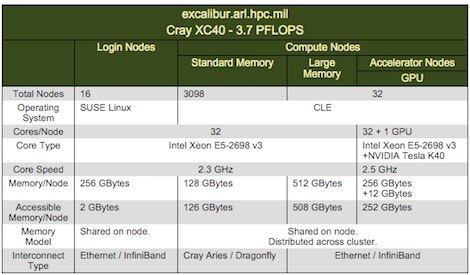 The Army has nearly 70 years of computing excellence and innovation, dating back to the ENIAC, which is more formally known as the Electronic Numerical Integrator and Computer, ARL Director Dr. Thomas Russell said.
The Army has nearly 70 years of computing excellence and innovation, dating back to the ENIAC, which is more formally known as the Electronic Numerical Integrator and Computer, ARL Director Dr. Thomas Russell said.
The DoD must continue to invest in computing infrastructure with projects such as Excalibur for the United States to remain at the cutting edge, Russell said.
ARL has a distinguished history as a national leader in scientific computing. It’s been a driving force behind our armed forces’ success on many battlefields,” he said. “Excalibur marks the next step.
“We must continue to expand this capability. Our computational resources give us the capabilities for the future of the Army. It gives us tools for 2040 and beyond.”
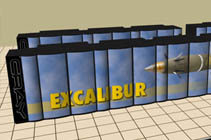 More powerful computers will allow the DoD research community to develop solutions to the most difficult technological challenges, said Dr. Raju Namburu, director of the ARL DOD Supercomputing Resource Center.
More powerful computers will allow the DoD research community to develop solutions to the most difficult technological challenges, said Dr. Raju Namburu, director of the ARL DOD Supercomputing Resource Center.
Excalibur has quickly become one of the most highly-demanded and utilized supercomputers in the Department of Defense research community,” Namburu said.
Researchers will use the Excalibur to study underbody blasts on combat vehicles, protection of Soldiers in extreme ballistic environments, tactical networks, cybersecurity network modeling, and real-time data analytics.
Russell said the Excalibur will improve every military scientific and engineering domain.
Computational science feeds into all our areas of research,” Russell said. “Here we are today with computing capability far exceeding anything anyone of us would have ever imagined.”

